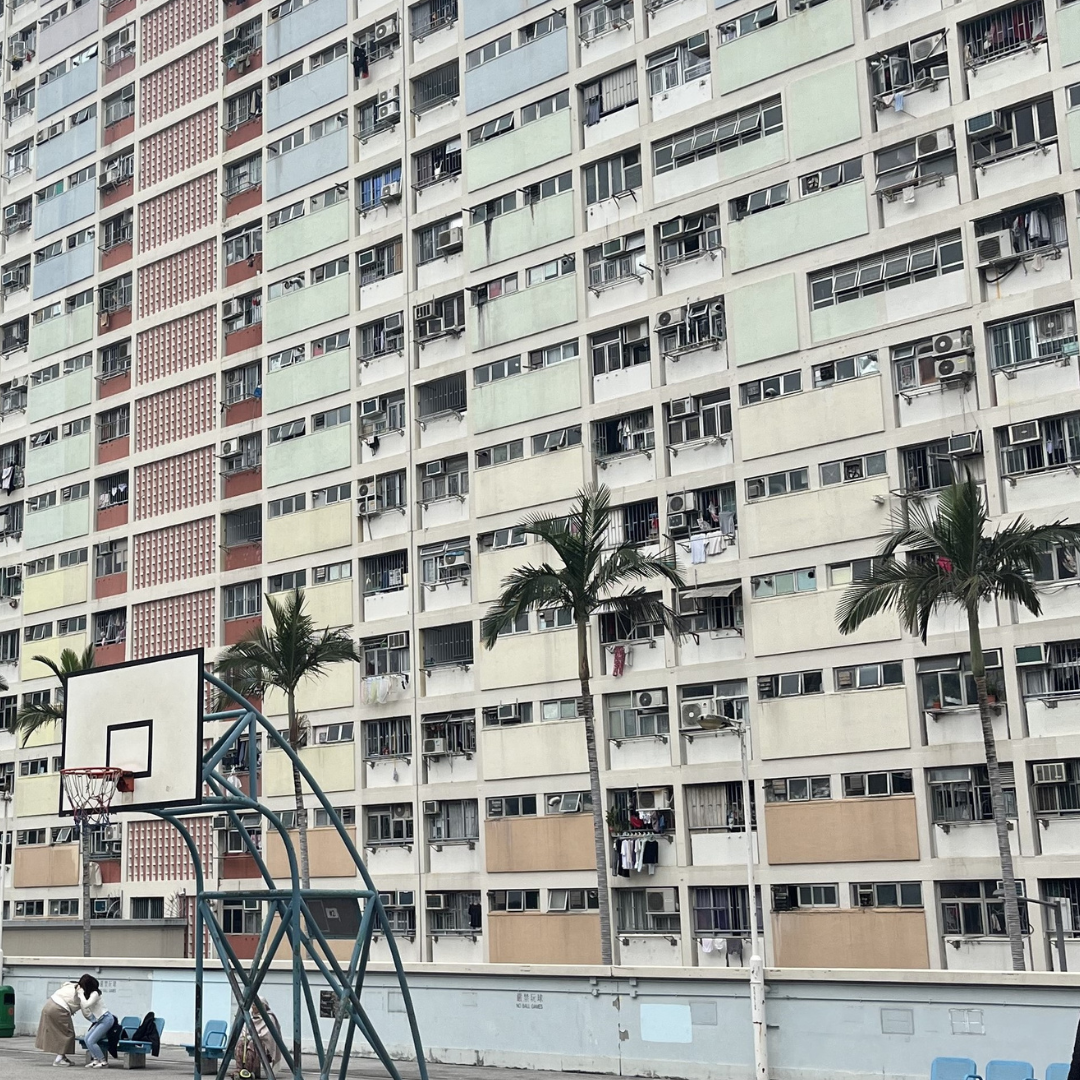One of the most rewarding aspects of studying abroad in Hong Kong has been the opportunity to delve deeper into the city's unique neighborhoods and communities. Recently, I had the chance to visit Choi Hung Estate, one of Hong Kong’s most iconic public housing complexes, with a special tour guide who grew up there. This visit offered me an insider's perspective on the significance of Choi Hung Estate to its residents and its place in the heart of the city.
Choi Hung Estate, which means "Rainbow Estate" in Cantonese, is famed for its vibrant, pastel-colored buildings. Built in the 1960s, it is one of the oldest public housing estates in Hong Kong and has become a popular spot for photographers and Instagram enthusiasts, thanks to its picturesque basketball court and striking facade.
Our tour guide welcomed us warmly and began by sharing his personal connection to the estate. He has lived here for over 40 years, and his deep affection for the place was palpable. As we walked through the bustling corridors and open spaces, he pointed out various landmarks and recounted stories of the estate's history and community spirit.
"Choi Hung is more than just a place to live," he explained. "It's a community where generations have grown up together. We have shared memories, challenges, and triumphs that bond us in a special way."
He described how, during its early years, Choi Hung Estate was a symbol of hope and progress for many families. Post-war Hong Kong faced a housing crisis, and the government’s initiative to build public housing estates like Choi Hung provided affordable living spaces for thousands of residents. Over time, it has become a microcosm of Hong Kong’s diverse and dynamic population.
Walking through the estate, I noticed the seamless blend of old and new. Traditional market stalls stood next to modern amenities, and elderly residents chatted animatedly with younger generations. There was a palpable sense of community here—a testament to the estate's role in fostering social bonds.
Our guide took us to the famous Choi Hung basketball court, a vibrant spot that has become an emblem of the estate. Against the backdrop of colorful apartment blocks, children played basketball, teenagers practiced dance routines, and photographers tried to capture the perfect shot. It was a lively, joyous scene that highlighted the estate's role as a communal gathering space.
"The basketball court is more than just a place for sports," he said. "It's where we celebrate festivals, hold community events, and come together to support one another. It's the heart of our estate."
He also shared stories of the estate's various community initiatives, such as tutoring programs for children, social gatherings for the elderly, and cultural festivals that celebrate the diverse backgrounds of its residents. These efforts, largely driven by resident volunteers, have helped to maintain a strong sense of belonging and mutual support within the estate.
Our tour concluded at a local eatery where our guide treated us to some traditional Hong Kong snacks. As we enjoyed our food, he spoke about the challenges faced by public housing estates in a rapidly modernizing city but emphasized the resilience and adaptability of the Choi Hung community.
Leaving Choi Hung Estate, I felt a deep appreciation for the rich tapestry of life that exists within its walls. It was a powerful reminder that the essence of a city lies not just in its famous landmarks but in the everyday lives and stories of its people.
This visit has enriched my understanding of Hong Kong's history and the indomitable spirit of its communities, and I look forward to uncovering more of Hong Kong’s hidden gems in the coming months.
Mallory Cohen
Spring 2024
GW Exchange - Hong Kong University of Science and Technology
School of Engineering and Applied Sciences
Computer Science and Political Science Double Major


